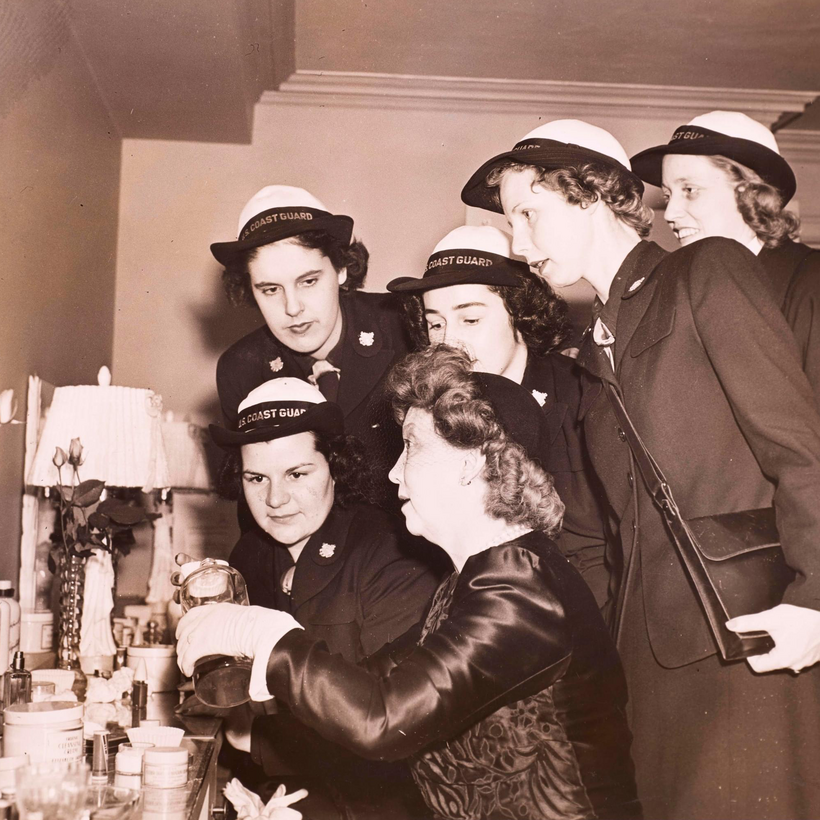Today, makeup is so ubiquitous that it’s difficult to imagine a time when a little translucent powder drew hard stares and condemnation. But just over 100 years ago, external beauty was thought to be the result of internal goodness. God-fearing women who never succumbed to self-indulgence, sloth, or selfishness were naturally beautiful. Meanwhile, women who applied even a whisper of rouge had something to conceal, such as sex workers who used cosmetics to camouflage evidence of sexually transmitted diseases. Makeup was a cover-up, and a woman who “disfigured” herself with it was untrustworthy, chided Godey’s Lady’s Book, a popular 19th-century women’s magazine.
So deeply entrenched were these beliefs that political commentators considered homemade rice powder applied to the face a threat to the American republic. False faces on women unraveled social trust, shattered community confidence, and threatened the nation’s stability. At the dawn of the 20th century, respectable women simply did not wear cosmetics.

Elizabeth Arden turned this thinking upside down. With astute market analysis, clever sales techniques, and supreme self-confidence, she brought about a true social revolution, literally changing the face of America.
Traveling overseas in 1912, two years after opening her first skin-care salon on Fifth Avenue, Arden, then in her early 30s and an untrained but ambitious businesswoman from poverty-stricken rural Canada, was searching for beauty ideas to entice her customers. She canvassed salons in London and Paris, putting herself in treatment chairs for facial peels, massages, “dynamic electrical processes,” and antidotes for aging. She wandered fashionable streets after dusk, analyzing the clothing, posture, hair, and skin of the beau monde, gathering firsthand impressions she would later describe with authority to clients eager to copy them.
Arden saw the svelte, chic Parisian women in designer gowns as she expected to. But some had a je ne sais quoi. They were transcendent: elegant, sophisticated, and somehow more themselves. What caused it? Arden discerned—to her own surprise—that it was cosmetics.
She was enthralled with the look, and stuffed her suitcase with various European powders, rouges, and lip tints. In 1913, Arden introduced Poudre de Lilac, “a delicately mauve tinted powder” to give one “a soft bloom.” It was a shrewd first product. Translucent powder was becoming available at American pharmacies and acceptable for those who would never consider themselves “painted women.”
Unable to shake her admiration for the ruby lips and smoky eyes she had observed on Paris’s most beautiful women, Arden slowly began to introduce colored products, starting with the Venetian Lip Salve in “an absolutely natural color,” which debuted in April 1913. She also released a liquid tint for cheeks called Rose. More shades soon followed.

The most controversial product was eye shadow, which Arden brought to her New York salon in 1914. She methodically identified the most daring of her upper-class customers and offered to teach them how to achieve the latest Parisian styles. Keen to embody European glamour, women of wealth and social standing put themselves in Arden’s hands. They enjoyed the feeling of transgression—and the glances of approval.
Arden enforced understatement: just enough makeup to be fascinating; never so much as to be vulgar. When questioned at parties and balls, the women who frequented her salon confided their secret to their friends, who quickly made their own salon appointments to get “the Arden look.” She plied the timid with free samples. Customers who purchased her Travelers’ Box, which was stocked with skin-care lotions, found cosmetics tucked discreetly inside.
At first slowly, then with ever increasing sales, Arden taught American women that wearing makeup could be tasteful and fun. She showed them how it enhanced, rather than covered, a woman’s beauty. It was a remarkable feat, liberating women from the strictures of convention.
Stacy A. Cordery is a professor of history at Monmouth College and the author of Alice: Alice Roosevelt Longworth, from White House Princess to Washington Power Broker

